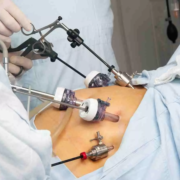Abatacept may decelerate progression of atherosclerosis in RA patients with CVD: Study

Researchers have found that abatacept treatment may benefit patients with rheumatoid arthritis (RA) who have a high risk of cardiovascular disease, according to a study published in Arthritis Research & Therapy. The study evaluated the effects of abatacept on the progression of atherosclerosis in patients with RA, showing potential advantages in terms of cardiovascular outcomes. This study was conducted by Yamada Z. and colleagues.
The use of biologic and targeted synthetic disease-modifying antirheumatic drugs (b/tsDMARDs) has significantly improved the prognosis and quality of life for patients with RA. However, older patients (aged ≥ 65 years) face a higher risk of developing infections and other complications due to the use of these drugs. Understanding the potential benefits and risks of different medications is crucial for providing optimal care.
This open-label, prospective observational study evaluated the 3-year efficacy and safety of abatacept in a cohort of younger (aged 20-64 years) and older (aged ≥ 65 years) RA patients. Eligible patients were refractory to conventional synthetic disease-modifying antirheumatic drugs (csDMARDs), bDMARD-naïve, and provided written consent.
The study stratified patients into four groups: younger patients receiving abatacept (AY), older patients receiving abatacept (AO), younger patients treated with csDMARDs (CY), and older patients treated with csDMARDs (CO).
The key findings of the study were:
-
A total of 216 patients were included in the study, with 52 in the AY cohort, 73 in the AO cohort, 41 in the CY cohort, and 50 in the CO cohort.
-
Patients in the abatacept groups experienced smaller increases in mean intima-media thickness (IMT), max IMT, and plaque score compared to the csDMARD groups. Although the differences were not statistically significant, abatacept showed potential benefits in slowing the progression of atherosclerosis.
-
Significantly lower increases in plaque score were observed in the abatacept cohort compared to the csDMARD cohort, taking into account disease activity at 156 weeks (P = .0303).
-
Patients receiving abatacept showed a higher proportion of good or good/moderate European League Against Rheumatism (EULAR) response, indicating better disease control.
-
While serious adverse effects, specifically infection, were more frequent in the abatacept cohort, there were no significant differences between the older and younger patients receiving abatacept.
Investigators noted several limitations, including the study’s observational design, relatively small sample size, and limited number of cases. Additionally, the study’s generalizability may be constrained by the exclusively Japanese population.
In conclusion, abatacept treatment may offer potential benefits for RA patients at high risk of cardiovascular disease, particularly among older patients. Although further research with larger and more diverse populations is needed, abatacept appears to be a promising option for managing RA while also potentially decelerating atherosclerosis progression.
Reference:
Yamada Z, Muraoka S, Kawazoe M, et al. Long-term effects of abatacept on atherosclerosis and arthritis in older vs. younger patients with rheumatoid arthritis: 3-year results of a prospective, multicenter, observational study. Arthritis Res Ther. 2024;26(1):87. Published 2024 Apr 17. doi:10.1186/s13075-024-03323-8
Powered by WPeMatico



















